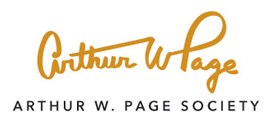This guest blog post is written by one of authors of the Top Three Paper Awards from the 2016 International PR Research Conference. “Diversity and Inclusion (D&I) in Recruitment and Retention of Public Relations Talent from Under-Represented Groups: A Study with the Arthur W. Page Society Members” by Hua Jiang, Ph.D., Rochelle Ford, Ph.D., Peta Long, Syracuse University, and David Ballard, American Psychological Association is available here.
According to the U.S. Census Bureau, 36.5 percent of the U.S. population by 2020 will consist of Hispanics, African-Americans, Asians and Native Americans. Moreover, Hispanics, African-Americans, foreign-born individuals, and people with disabilities have been the four fastest growing groups in the U.S. workforce. Respecting and responding to diversity and inclusion (D&I) issues is an important issue that public relations industry faces. Both scholars and professionals called for more studies examining D&I from a broad approach and beyond gender, race and ethnicity.
To answer this call, our research team studied the best D&I practices among members of the Arthur W. Page Society in recruitment and retention of public relations talent from under-represented groups. Our study addressed the following research questions:
- How does the Page Society members define diversity and inclusion within their units?
- What diversity and inclusion goals have the members set for their units?
- How do these goals and activities fit into the vision/mission of the wider organization?
- What actions are the Page Society members implementing to enhance D&I within their organizations, particularly in relationship to recruitment and retention of talent from under-represented groups?
- What resources are being dedicated to these activities?
- How are these activities being measured/evaluated for effectiveness?
- How effective have these activities been?
- What makes the most effective activities work?
The surveyed Page society members (n=82) regarded many aspects of diversity as important to them in recruiting and retaining public relations talent, such as race, ethnicity, gender, disability, age, sexual orientation, veteran status, language, religion among others. However, more than 50 percent of the surveyed organizations reported dissatisfaction with current diversity and inclusion within their U.S. communication teams—Racial and ethnic diversity among their communication teams are still significantly lower in proportion to the U.S. population, which is consistent with what we found in the follow-up interviews.
As for the D&I goals that the Page society members set for their units, the majority of our survey respondents (62.8 percent) reported having diversity and inclusion goals. Nearly 75 percent of the participating member organizations indicated that D&I goals and objectives fit very well or completely into their company’s overall vision or mission. Overall, our interviewing participants felt that their organizations do have a diversity mandate to make progress, but very few of them have defined numerical goals. The most important task for them to accomplish is to maintain a workforce that reflects both their current market and their potential, future markets where they operate their businesses. Although the overall satisfaction level was low for diversity within the Page membership, some respondents listed their D&I goals for the year of 2015. Some examples include:
- “Strive for a workforce that reflects the population of our home market as a minimum – and ultimately, reflects the population of our client base, which is national.”
- “40 percent of job applicants interviewed must be diverse above the manager level.”
- “Make sure final slates have at least two diverse candidates; improve diversity among management level employees; and achieve top scores for inclusion and diversity in employee engagement survey.”
- “Drive employee engagement through improved Employee Network effectiveness; Elevate diversity brand awareness; Attract, develop and retain diverse talent; Enhance diversity training.”
The Page member organizations have implemented many of the best practices that prior D&I literature discussed. The top three actions that the organizations implement to enhance D&I within their organizations consist of:
- CEOs and other C-Suite executives highly committed to enforcing diversity and inclusion policies;
- Leaders highly engaged with diversity-related activities;
- Maintaining a diverse pool of qualified candidates for executive positions as a critical part of their succession plan.
Nevertheless, none of the strategies is being used by the majority of our survey participants. The strategies those surveyed member organizations reported implementing with the greatest satisfaction include: (1) having a diversity/inclusion director/champion; (2) having a diversity and inclusion mission or vision statement; and (3) enforcing a competency-based recruitment policy. In terms of refining their D&I strategies, the organizations focused on the following: (1) establishing a measurable D&I initiative; (2) having a minority executive training program; (3) setting up a sufficient budget for their D&I initiatives; (4) conducting culture and D&I audits and assessments; and (5) offering managerial training related to D&I. Our survey participants emphasized consistently that leadership support and commitment is key to implementing strategies and achieving D&I goals. Having D&I compensation or incentives for managers was named both the least interested and the least feasible strategies, which is contradictory to what prior literature suggested.
Of those surveyed Page members who dedicate a considerable amount of resources to their D&I initiatives, workforce retention has received the most resources when considering budget, dedicated professionals, support/administrative staff, and training and other resources. A dedicated professional is most often used in attracting talent and talent development receiving the highest budget among the Page members. Overall, the members believe the resources being dedicated to D&I budget, training time, dedicated professionals, and support staff are sufficient and affordable.
While 62.8 percent of our survey participants reported to have D&I goals, D&I Measurement & Accountability is still the weakest area for the Page members surveyed and interviewed. More than half of the participating member organizations reported that their CEO and other C-suite executives place a very high level of importance on diversity and inclusion. Nevertheless, 72.2 percent of them do not have D&I goal achievements tied to their executive compensation, making the accomplishment of D&I initiatives more challenging that it could be. Only about 40 percent of the surveyed organizations indicated that they have integrated a comprehensive D&I strategy very well or completely well into their overall business strategy.
Two key factors that contribute to the Page members’ most effective D&I-related activities include: (1) leadership support and commitment; and (2) dedicated effort focused on employee engagement.
Last but not the least, our survey and interviewing participants shared their recruitment practices through institutional partnership:
At the entry-level as well as for internships:
- Several universities including Howard, Hampton, Maryland, Syracuse, Florida A&M, Northwestern, Penn State, Georgetown, University Texas at Austin, University of Southern California at Austin, and Florida International University were mentioned.
- The LAGRANT Foundation and Black Millenniums (Black men in communication), as organizational sources for diverse talent at the entry-level, were also mentioned.
For mid-level careers the following professional organizations were mentioned:
- The National Association of Black Journalists
- The National Association of Hispanic Journalists
- Public Relations Society of America
- The Association of Latino Professionals for America
- The Black Public Relations Society, and Color Comm.
For senior-level managers:
- The Public Relations Society of America;
- The Arthur Page Society;
- They found the greatest success with these groups because of the commitment of the professionals to professional development. They do not need to be trained.
Note: The full-length paper won the Arthur W. Page Center Benchmark Study Award and Top 3 Paper of Practical Significance Award at the 2016 Annual International Public Relations Research (IPRRC) Conference. For the full-length paper, please visit here.

The project was conducted with funding and in-kind support from:








